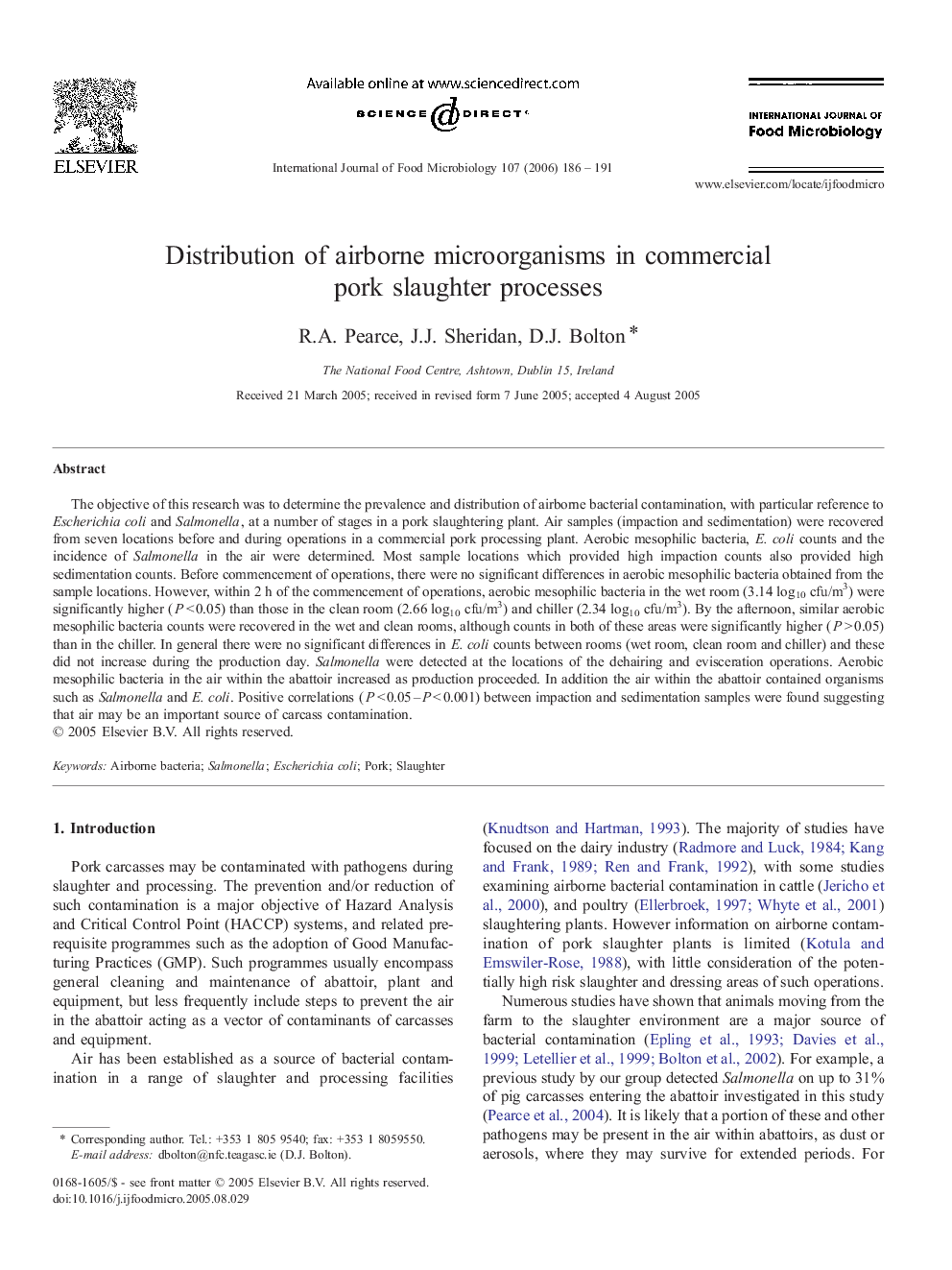| Article ID | Journal | Published Year | Pages | File Type |
|---|---|---|---|---|
| 4370009 | International Journal of Food Microbiology | 2006 | 6 Pages |
The objective of this research was to determine the prevalence and distribution of airborne bacterial contamination, with particular reference to Escherichia coli and Salmonella, at a number of stages in a pork slaughtering plant. Air samples (impaction and sedimentation) were recovered from seven locations before and during operations in a commercial pork processing plant. Aerobic mesophilic bacteria, E. coli counts and the incidence of Salmonella in the air were determined. Most sample locations which provided high impaction counts also provided high sedimentation counts. Before commencement of operations, there were no significant differences in aerobic mesophilic bacteria obtained from the sample locations. However, within 2 h of the commencement of operations, aerobic mesophilic bacteria in the wet room (3.14 log10 cfu/m3) were significantly higher (P < 0.05) than those in the clean room (2.66 log10 cfu/m3) and chiller (2.34 log10 cfu/m3). By the afternoon, similar aerobic mesophilic bacteria counts were recovered in the wet and clean rooms, although counts in both of these areas were significantly higher (P > 0.05) than in the chiller. In general there were no significant differences in E. coli counts between rooms (wet room, clean room and chiller) and these did not increase during the production day. Salmonella were detected at the locations of the dehairing and evisceration operations. Aerobic mesophilic bacteria in the air within the abattoir increased as production proceeded. In addition the air within the abattoir contained organisms such as Salmonella and E. coli. Positive correlations (P < 0.05–P < 0.001) between impaction and sedimentation samples were found suggesting that air may be an important source of carcass contamination.
